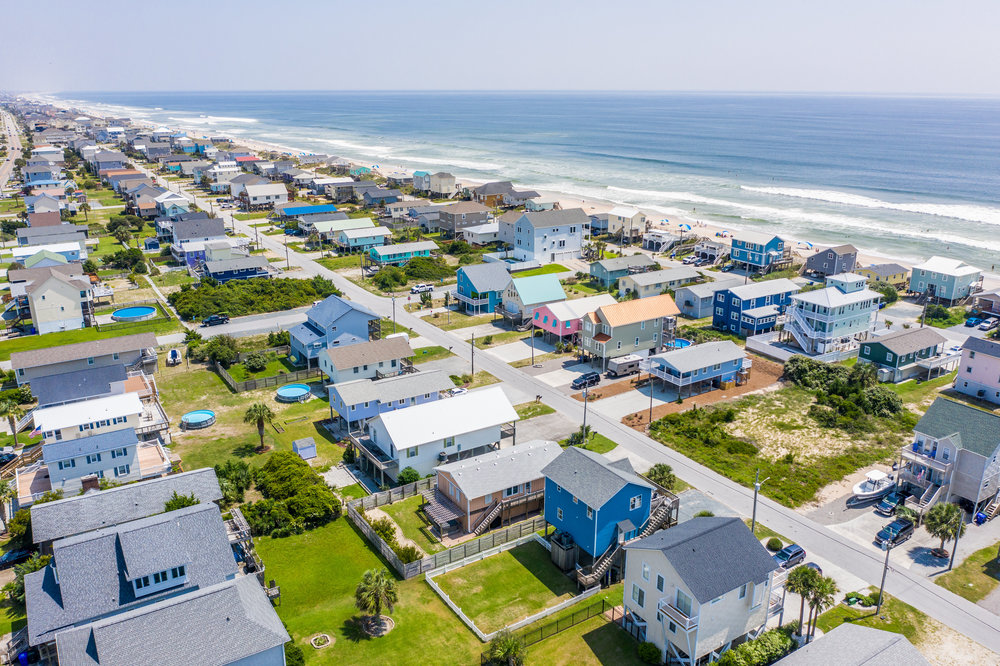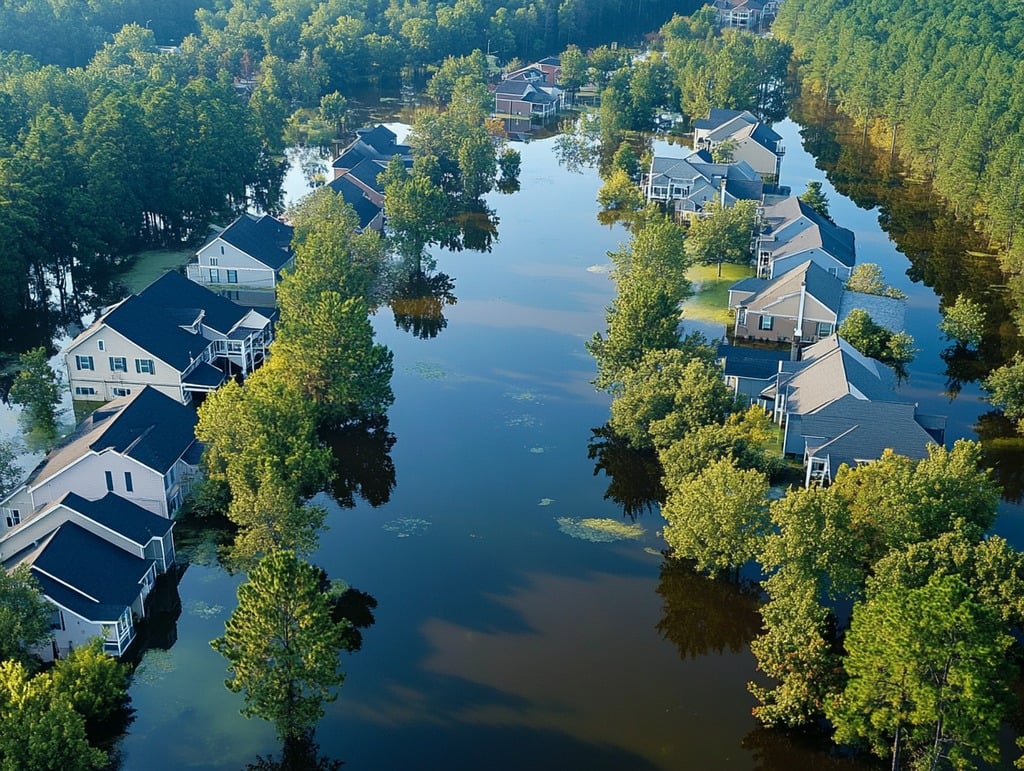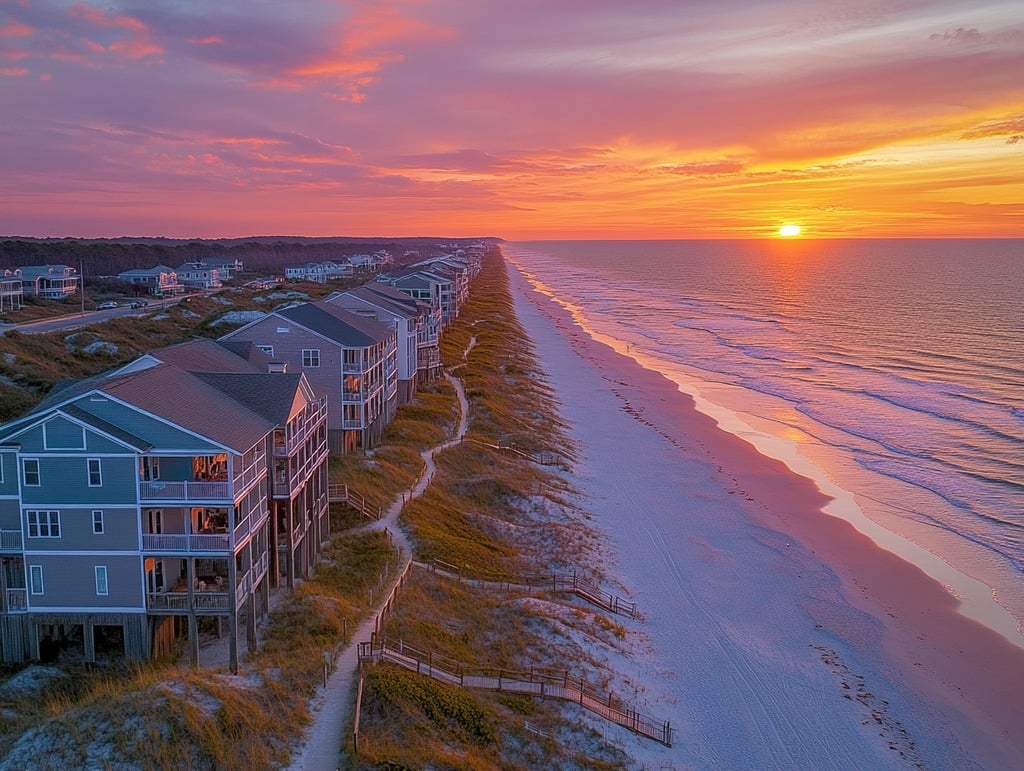There’s something magical about coastal living—the soothing sound of waves, salt-kissed breezes, and golden sunrises peeking over the water. It’s no wonder that buying a home near the coast is a dream for many. Whether you’re considering a vacation getaway, a rental investment, or a forever home, the coast offers a lifestyle unlike any other.
But living by the ocean isn’t all flip-flops and frozen drinks. Coastal real estate comes with unique responsibilities and considerations—especially when it comes to flood zones, insurance, and weatherproofing. If you’re thinking of planting roots near the beach, here’s what you need to know before diving in.
Understanding Flood Zones: What You Need to Know
Flood zones are one of the biggest factors in coastal real estate. Properties near the ocean—or even tidal rivers and sounds—are more vulnerable to flooding, especially during hurricanes and heavy rain events. That’s why the Federal Emergency Management Agency (FEMA) has designated flood zones to help assess risk.
Flood zones fall into several categories, but the most common near the coast are:
-
Zone VE (Coastal High Hazard Area): These are the most at-risk areas, located in areas subject to storm surge and wave action. Homes here face the highest insurance premiums and stricter building requirements.
-
Zone AE: These are high-risk flood areas but without the velocity wave action. Still, they’re subject to rising waters and often fall within FEMA’s 100-year floodplain.
-
Zone X (Shaded and Unshaded): These are considered moderate or minimal-risk areas. However, “minimal” doesn’t mean “no risk”—flooding can happen anywhere, and we’ve seen it in some unexpected places.
When buying a coastal home, your mortgage lender will often require a flood elevation certificate to determine the property’s risk. If your home is in a high-risk flood zone, flood insurance through the National Flood Insurance Program (NFIP) or a private carrier is usually mandatory.
Pro Tip: Just because a property isn’t in a high-risk zone doesn’t mean it’s immune to flooding. Many buyers in “low-risk” areas choose to purchase flood insurance for peace of mind—and it’s often cheaper when it’s not required.
Insurance Requirements: It’s More Than Just Flooding
Flooding is only part of the coastal insurance puzzle. Wind and hail damage are also major concerns, especially in hurricane-prone areas like the Carolinas, Florida, and the Gulf Coast.
Many standard homeowner’s insurance policies exclude wind and hail coverage in coastal zones due to the high risk. In those cases, you’ll need to purchase a separate wind and hail policy, either through a private insurer or a state-run wind pool like North Carolina’s Coastal Property Insurance Pool (formerly the Beach Plan).
Here’s a quick overview of typical insurance needs near the coast:
-
Homeowners Insurance: Covers damage from fire, theft, vandalism, and more—but may exclude wind and hail near the coast.
-
Wind and Hail Insurance: Separate policy that covers storm-related damage to your home’s structure.
-
Flood Insurance: Covers water damage from storm surge, tidal flooding, and heavy rainfall. Most policies cap coverage at $250,000 for the structure and $100,000 for contents (under NFIP).
-
Excess Flood Insurance: Optional policy that offers additional coverage above NFIP limits—popular for higher-value homes.
Because premiums can vary significantly depending on your location, elevation, building materials, and mitigation efforts, it’s smart to get quotes early in the homebuying process. Your real estate agent can refer you to local insurance professionals who understand coastal risks and regulations.
Weatherproofing and Construction: Building for the Beach
Coastal homes need to stand up to salt, wind, rain, and sun—and that means not every construction method is created equal. Here are some key things to consider:
1. Elevated Foundations: In flood-prone areas, many homes are built on pilings or piers to elevate the living space above anticipated flood levels. This not only helps protect the home but can lower insurance premiums.
2. Impact-Resistant Windows and Doors: These provide better protection against wind-borne debris and may be required in hurricane-prone areas. They also help reduce insurance costs.
3. Storm Shutters or Panels: If impact windows aren’t an option, shutters offer a secondary layer of protection during hurricanes.
4. Corrosion-Resistant Materials: Salt air is brutal on metal fixtures and untreated wood. Stainless steel fasteners, pressure-treated wood, and non-corrosive materials help extend the life of your home.
5. Wind-Resistant Roofs: Metal roofs are popular along the coast because they’re durable, wind-resistant, and shed rainwater easily. Whatever the roofing material, proper installation and bracing are crucial.
6. Ventilation and Moisture Control: Humidity and salt can cause mold, mildew, and wood rot. Homes near the coast should have proper ventilation in crawl spaces and attics, as well as moisture barriers.
If you’re buying a home that’s already built, schedule a detailed inspection with someone experienced in coastal properties. If you’re building new, look for contractors familiar with coastal codes and building practices—they’ll know what it takes to build a home that lasts.
Lifestyle Perks: Why It’s Worth It
Now that we’ve covered the logistics, let’s talk about the good stuff—because the coastal lifestyle has a lot to offer, and for many people, the perks far outweigh the challenges.
1. Endless Outdoor Fun: Whether it’s boating, fishing, surfing, or simply walking the beach, coastal living invites an active lifestyle. You’ll have more opportunities to soak up nature and less excuse to stay indoors.
2. Stunning Views and Sunsets: There’s nothing quite like waking up to an ocean sunrise or watching the sun dip behind the marsh in the evening. Coastal homes offer daily doses of beauty that are hard to beat.
3. Vibrant Communities: Coastal towns often attract people who love life. You’ll find thriving art scenes, unique shops, waterfront dining, and community festivals that bring people together.
4. Vacation Vibes All Year Long: Even if you’re not on vacation, living near the coast makes every day feel a little more relaxed. Flip-flops and beach cruisers are practically part of the local dress code.
5. Rental and Investment Potential: If you’re not planning to live in your coastal home full-time, it can still work for you. Vacation rentals are in high demand, especially during the summer season. Just be sure to research local short-term rental rules—they vary by city and county.
What to Ask Before You Buy
If you’re seriously considering buying a coastal home, come prepared with the right questions:
-
What flood zone is the property in?
-
Is flood insurance required? How much will it cost?
-
Is wind and hail insurance included in the homeowner’s policy?
-
Has the home ever flooded before?
-
Is it built to current hurricane or coastal construction codes?
-
Are there any ongoing HOA or community fees for beach access or maintenance?
-
What is the elevation of the home?
-
What weatherproofing features are in place?
A trusted real estate agent with coastal experience can walk you through these questions and connect you with local resources—from inspectors and insurance agents to contractors and repair specialists. If you’re buying in North Carolina, South Carolina, or anywhere along the southeastern coast, your agent will be your most valuable guide.
Final Thoughts: Is Coastal Living Right for You?
Buying a home near the coast is a dream for many—and with the right planning, it can absolutely be worth it. But it’s important to go in with open eyes. From insurance requirements and flood zones to weatherproofing and maintenance, owning coastal property comes with a unique set of challenges.
That said, the rewards are immense. The peace of the waves, the salty breeze on your porch, the laid-back lifestyle—all of it makes for a life well lived. If you’re prepared for the logistics and committed to protecting your investment, coastal living might just be the best move you ever make.
Looking for coastal properties in southeastern North Carolina? From the shores of Wrightsville Beach to the riverfront neighborhoods of Wilmington, our team knows the ins and outs of buying near the water. Let us help you find your perfect slice of paradise.






